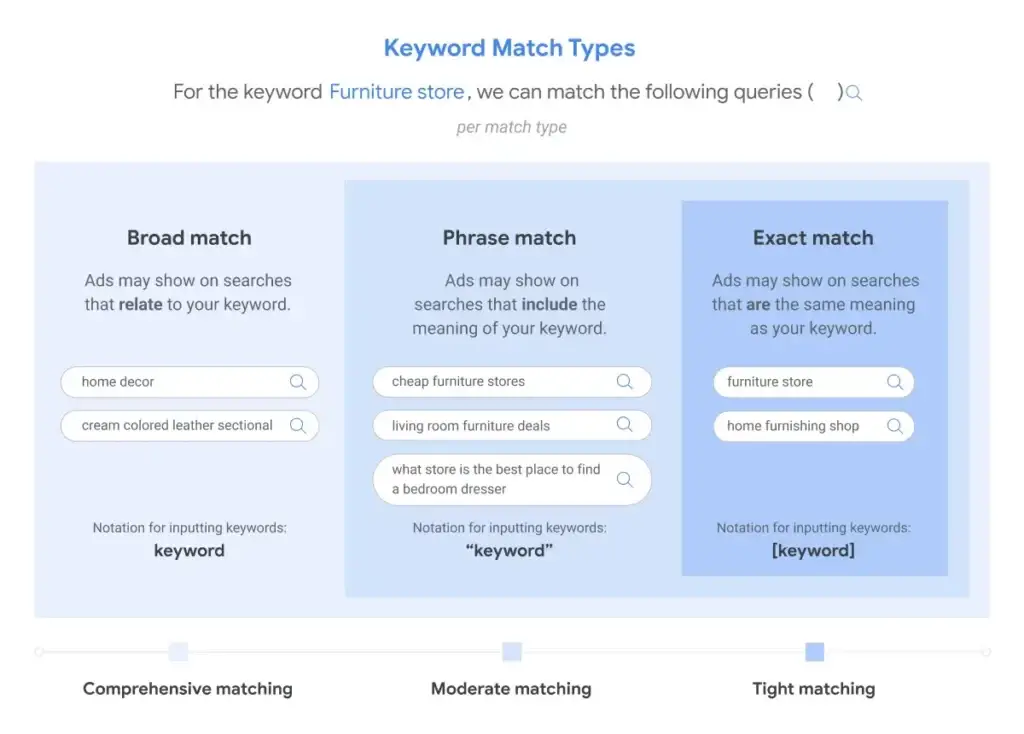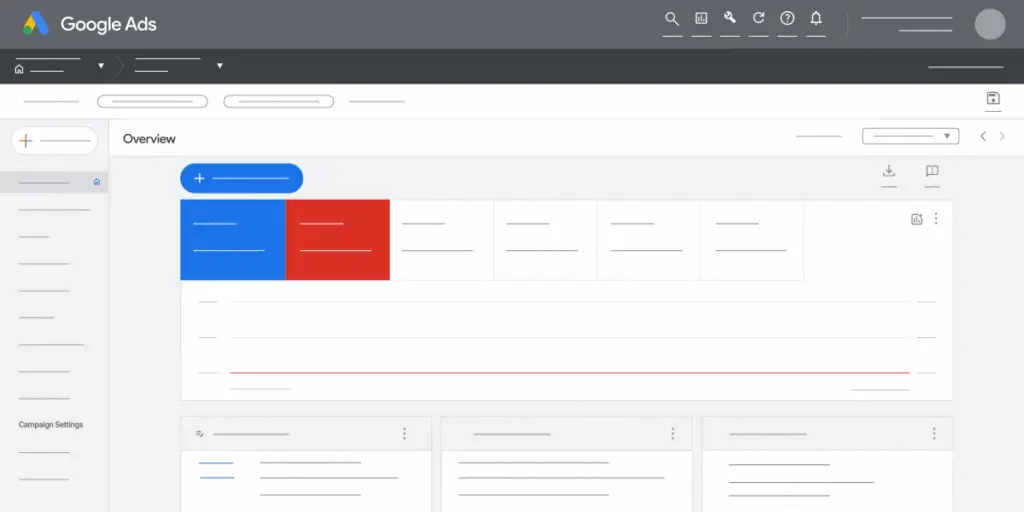We live in a world where over 252,000 websites are created every single day.
So knowing the difference between SEO and Google Ads is a necessity because each path will help you stand out from the billions of sites out there..
What is the difference between SEO vs Google Ads?
SEO, or Search Engine Optimisation is a gradual process where you build up your website’s relevance and authority over time.
By improving your site with quality content and keywords, you’re building your trust with Google.
It’s like building a reputation. It takes time and consistent effort, but once you’re known, you’re likely to stay known.
In contrast, Google Ads is about getting quick visibility.
It’s a way to jump to the front of the line by paying for ad space at the top of Google’s search results.
This method is direct and fast, but can be expensive.
It’s like putting up a flashy sign on a busy road.
You’re guaranteed to get noticed, but only as long as you’re willing to pay for that prime spot.
So in a nutshell, the difference between SEO vs Google Ads is that SEO is a slow and steady build-up, while Google Ads offers immediate results but requires ongoing investment.
Both aim to boost your presence on Google, but they follow different paths to get there.
This article will go into these differences in more detail, helping you decide which strategy – the steady building of SEO or the instant spotlight of Google Ads – is right for your website.
The 7 main differences
Difference #1: the costs
At first glance, SEO might seem like you’re throwing money into a black hole.
You’re paying an SEO agency, maybe $3,000 to $12,000 a month, and initially, you can’t see a direct return on that investment.
But here’s the thing: SEO is a long-term game.
Over time, as your site starts ranking for key terms, you can actually track how much money SEO made you.
Tools like WhatConverts can show you the exact value of your organic traffic.
It’s like planting a tree. You water it (invest money) and wait.
But once it starts bearing fruit, the returns can be huge (there is no telling what Generative AI will do for the future of user journeys though).

You might invest thousands in SEO, but when those top rankings kick in, you could be raking in way more, consistently without paying a dollar more on ads.
Whereas Google Ads is more straightforward.
You put in money, and you can see exactly what you get out – clicks, customers, sales.
It’s like a vending machine; you put in a dollar, you get a soda. Simple.
But here’s the catch: once you’ve spent that money, it’s gone.
If you don’t have a good strategy for customer retention or a high customer lifetime value, your return might end there. You keep feeding the machine to keep getting results.
Difference #2: the time it takes to get results
Getting Google Ads right is more art than science.
You’re tuning and tweaking, like trying to get the perfect pitch on a violin.
Results can show up quickly, sometimes in days or weeks, but getting the most bang for your buck takes continuous refinement.
SEO, in contrast, is a slow burn. It’s like planting an oak tree.
For the first few months, maybe even a year, it seems like not much is happening.
But give it time, and you’ll have a sturdy presence that keeps growing.
You could start seeing notable changes in your rankings and traffic within 6-12 months, but the biggest impacts often show up after that.
Difference #3: reaching the right people at the right time
Google Ads is all about keywords – it’s like having a secret code to reach exactly who you want, when you want.
You pick the precise terms that your potential customers are searching for.
This way, your ad pops up right when someone is looking for what you offer.
SEO, in contrast, is broader.
You’re not just focusing on a few keywords; you’re creating content that appeals to a wide audience.
It’s about showing up in a variety of searches, not just the super specific ones.
You’re playing the long game, building up a presence that gets you found over time, not just in the moment.
Google Ads gives you the power to be there at the exact moment someone is searching for what you offer, making it incredibly effective for immediate results.
SEO is more about building a foundation, so you’re there when people are looking, even if they’re not looking for something as specific.
Difference #4: the effort it takes
With SEO, you’re signing up for a long-term project.
It’s like building a house.
You need a:
- solid foundation (your website)
- good materials (content)
- and regular maintenance (updates and tweaks)
It’s a lot of behind-the-scenes work, and the results take time to show.
You might not see significant traffic increases for several months, but once it kicks in, it’s a huge revenue driver.
Google Ads requires a different kind of effort.
Think of it as setting up a store in a busy mall.
You want:
- the best spot (ad placement)
- an eye-catching display (your ad design)
- and the right sales pitch (ad copy)
It’s a balancing act between spending enough to get seen and not so much that you’re wasting money.
The initial setup can be intense, with a lot of testing and adjusting.
But once you find the sweet spot, it’s more about maintenance and small tweaks, unless the market changes or new competitors show up.
Difference #5: choosing keywords is different
When it comes to keywords, Google Ads and SEO are like two different ball games.
In Google Ads, you’ve got three main types of keywords: broad, phrase, and exact.
- Broad is like casting a wide net, hoping to catch anything related to your word.
- Phrase is a bit more specific – like fishing with a certain bait for a particular type of fish.
- Exact is like spearfishing; you’re aiming for one specific fish, and that’s it.

You have to be strategic.
Pick too broad, and you might get a lot of clicks but not the right kind.
Go too exact, and you might not get enough traffic.
SEO, on the other hand, is about a mix of short-tail (broad, but highly competitive), medium-tail (more specific, less competitive), and long-tail (very specific, niche, and less competitive) keywords.
It’s not just about picking words; it’s about building topical authority.
You’re not just trying to rank for one keyword.
You’re creating a web of content that covers a topic inside and out.
This way, Google sees you as an authority in that area.
You’re like a library on a specific subject, filled with books (pages and posts) on everything related to that topic.
Difference #6: the control you have over content
With Google Ads, you’re the boss.
You craft your message, choose your keywords, and control exactly how your ad appears.
It’s like making a sandwich – you pick the bread, the fillings, and how much mayo you want.
You have direct control over the message you’re sending out and to whom.
SEO, though, is a different beast.
You can create the best content in the world, but you don’t get to decide how Google shows it or to whom.
You’re at the mercy of Google’s algorithms. They decide what content appears for which search queries.
Sure, with SEO, you’re trying to influence this by using the right keywords and creating relevant, high-quality content.
But ultimately, it’s Google’s call.
Your content could rank for a variety of keywords, some of which you might not have specifically targeted.
This means your control over the exact message each visitor sees is limited.
Difference #7: how you track results is different
With Google Ads, you get a clear, real-time view of what’s happening.
It’s like a sports game with a live scoreboard.
You see every click, every cost, and every conversion as they happen.
You can track your ad spend down to the penny, and see immediately if your ads are hitting the mark.

This allows for quick adjustments – it’s agile, precise, and you can see your ROI (return on investment) in plain sight.
SEO, however, is more like tracking a stock investment.
You’re looking at trends and growth over time, not instant results.
Tools like Google Analytics and Ahrefs help you track organic traffic, keyword rankings, and user behaviour, but these metrics build and change slowly.
You’re not just tracking clicks; you’re looking at how your overall web presence grows and evolves.
The difference is in the immediacy and type of data you get.
Google Ads offers a fast, transactional view – quick, clear feedback on your investment.
SEO gives you a broad, strategic view, showing how your online authority and presence grow over time.
When SEO and Google Ads work together
When your web pages are packed with the right keywords (thanks to your SEO efforts), something interesting happens in your Google Ads campaigns.
Your Quality Scores and Ad Ranks get a boost.
Here’s the thing: Google loves relevance.
When your ads link to pages that are closely aligned with your target keywords, Google sees this as a good match.
This relevance improves your Quality Scores – a key metric that Google uses to determine where and how often to show your ads.
Higher Quality Scores can lead to better ad placement and lower costs per click.
When you use them together, you’re playing the short game and the long game at the same time.
At the same time, these keyword-rich pages that are helping your Google Ads are also fueling your SEO engine.
They help establish your site’s authority and relevance in your industry.
So, as your ads are getting more clicks (thanks to better Ad Ranks and lower costs), your organic search rankings are likely improving too.
Google Ads is great for:
- Promotions
- Intercepting competitors’ traffic
- Launching new products
- or just getting your name out there fast
Meanwhile, your SEO efforts are quietly working in the background.
They’re building your online reputation, gradually increasing your organic reach.
It’s a slow process, but as your SEO grows stronger, your need for paid ads might decrease.
You start showing up in searches naturally, which is great for long-term brand credibility.
The synergy here is powerful.
Once your SEO starts to kick in, it can reduce your reliance on paid ads, making your marketing more cost-effective.
Together, they ensure you’re always visible, whether someone is looking for you specifically or just browsing.
It’s covering all your bases, making sure your business gets seen, both now and in the future.
SEO vs Google Ads is simpler than you think
Alright, we’ve journeyed through the world of SEO and Google Ads, and guess what?
It’s not as complex as it often seems.
Both have their place in the grand scheme of digital marketing, like different gears in a well-oiled machine.
The key takeaway? Don’t put all your eggs in one basket.
A balanced approach, where SEO and Google Ads complement each other, often yields the best results.
Use Google Ads for that immediate push and SEO for sustainable growth.
So, take a step back, look at your digital marketing strategy, and think about how these two powerful marketing channels can work together for your business.
Until next time, happy marketing!
